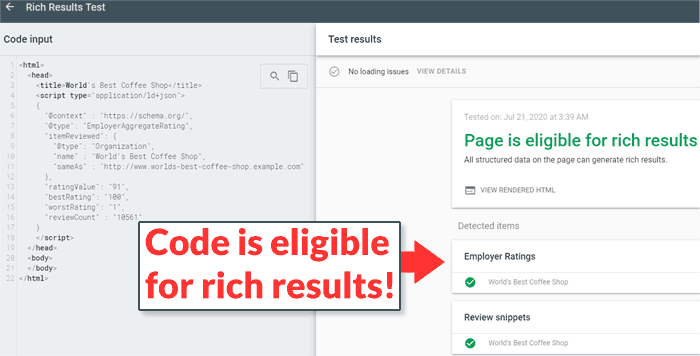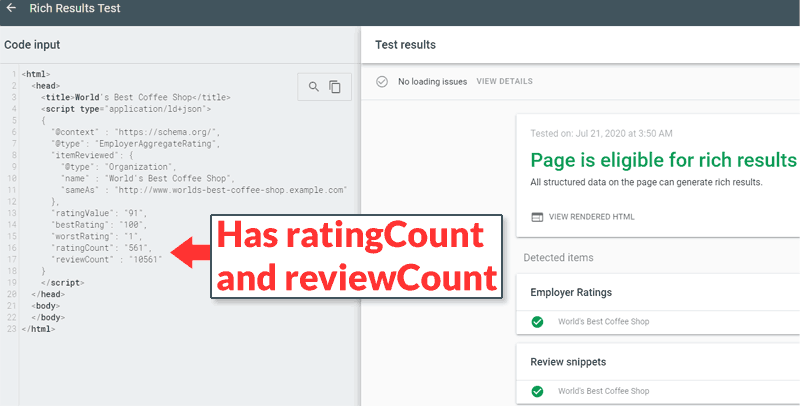Google updated their developer page for job posting structured data for employer aggregate ratings. The change adds an additional required property to help qualify for rich results.
Job Posting Related Structured Data Keeps Changing
The structured data requirements for job posting seems as if it has been in a state of evolution. So it’s good to keep up with large and incremental changes to structured data requirements.
Failure to keep up with changes can result in a loss of featured snippets or other rich results.
For example, the job posting structured data used to rely on the review snippet structured data in order to qualify for rich results.
But Google later encouraged publishers to update to EmployerAggregateRating structured data and away from review structured data..
The new change is similar but narrower in scope.
What Changed in Employer Aggregate Rating Structured Data
Google updated the developer page in order to reflect changes in the Rich Results Test tool.
Google has introduced an additional required property called, reviewCount.
The reviewCount property provides Google with a count of how many aggregated reviews are on a page. This data is independent of how many ratings were provided.
So it’s possible to have twenty reviews for a product and fifteen ratings.
Here’s an example of the reviewCount structured data in a JSON-LD structured data script:
<html>
<head>
<title>World’s Best Coffee Shop</title>
<script type=”application/ld+json”>
{
“@context” : “https://schema.org/”,
“@type”: “EmployerAggregateRating”,
“itemReviewed”: {
“@type”: “Organization”,
“name” : “World’s Best Coffee Shop”,
“sameAs” : “http://www.worlds-best-coffee-shop.example.com”
},
“ratingValue”: “91”,
“bestRating”: “100”,
“worstRating”: “1”,
“reviewCount” : “10561”
}
</script>
</head>
<body>
</body>
</html>
Screenshot Shows Code With reviewCount Property is Eligible for Rich Results

Mixed Rating Count and Review Ratings
The example below is for a situation where there are 561 ratings out of 10,561 total reviews, meaning there were 10,000 reviews and only 561 ratings.
<html>
<head>
<title>World’s Best Coffee Shop</title>
<script type=”application/ld+json”>
{
“@context” : “https://schema.org/”,
“@type”: “EmployerAggregateRating”,
“itemReviewed”: {
“@type”: “Organization”,
“name” : “World’s Best Coffee Shop”,
“sameAs” : “http://www.worlds-best-coffee-shop.example.com”
},
“ratingValue”: “91”,
“bestRating”: “100”,
“worstRating”: “1”,
“ratingCount”: “561”,
“reviewCount” : “10561”
}
</script>
</head>
<body>
</body>
</html>
Screenshot Shows that Mixed Rating and Review Count Code Qualifies for Rich Snippets

Only Required to Use at Least One Property
This does not mean you have to use both properties. You can use one or the other property. It’s up to you.
You can use the “reviewCount” property instead of the ratingCount property if you want. It still validates for Rich Results.
What’s important to understand is that publishers are not required to use both. One is enough unless the number of reviews is different than the number of ratings.
See the updated structured data requirements here:





